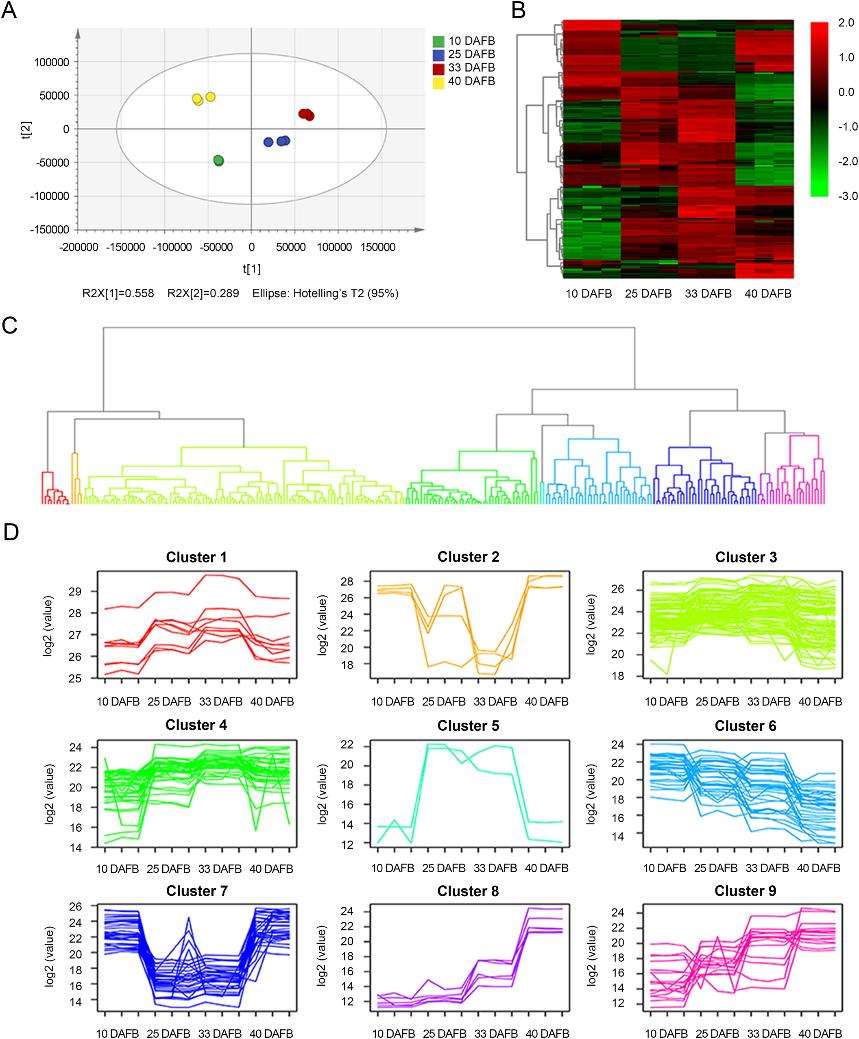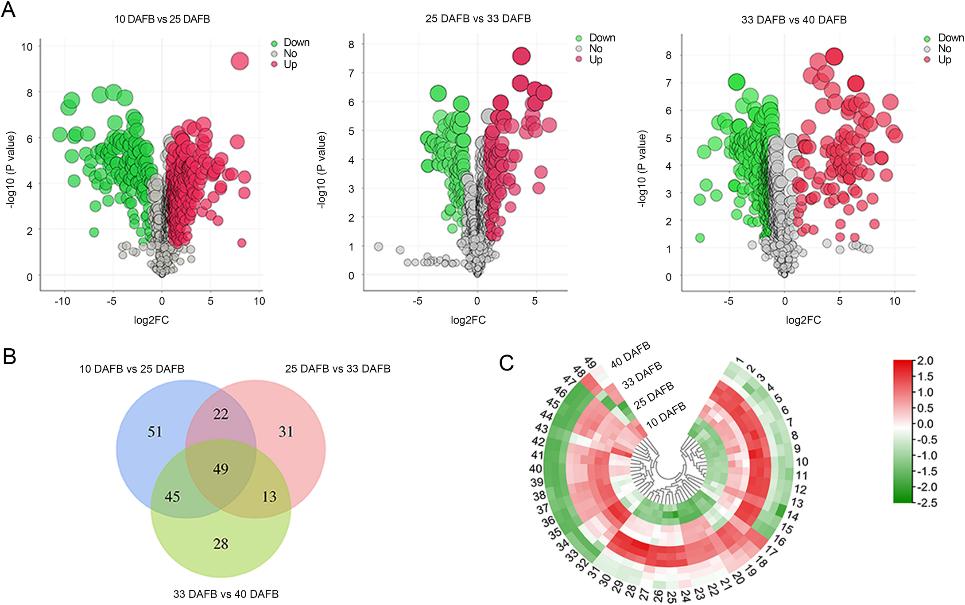What is Prunus avium (Sweet Cherry)?
Prunus avium, commonly known as sweet cherry, is a species of cherry native to Europe and Western Asia. Renowned for its succulent taste and vibrant color, this species has become a staple in various culinary delights. However, beyond its sensory appeal lies a complex web of metabolic pathways that dictate its growth, development, and nutritional composition.
Understanding the metabolic intricacies of Prunus avium is crucial for unraveling the factors influencing its growth, development, and nutritional content. Metabolomics, as a branch of omics sciences, involves the systematic study of small molecules, or metabolites, within a biological system. Prunus avium metabolomics nalysis, therefore, aims to comprehensively identify and quantify these metabolites, shedding light on the dynamic biochemical processes underlying cherry physiology.
At Creative Proteomics, we bring over two decades of expertise to the forefront of Prunus avium metabolomics nalysis. Our specialized team employs cutting-edge technologies to delve into the intricacies of cherry metabolism. Through a meticulous approach, we unravel the metabolic pathways that govern the synthesis and breakdown of compounds within sweet cherries.
Our Prunus avium Metabolomics Analysis Projects
Our Prunus avium metabolomics nalysis projects are crafted with specific research objectives in mind. These may include:
Elucidating Metabolic Pathways:
- Mapping out the interconnected metabolic pathways within Prunus avium.
- Understanding how various metabolites contribute to the overall metabolic network.
- Identifying key regulatory points that govern cherry physiology.
Nutritional Profiling:
- Characterizing the nutritional composition of sweet cherries.
- Quantifying essential metabolites such as sugars, organic acids, and amino acids.
- Investigating variations in nutritional content under different environmental conditions.
Comparative Metabolomics:
- Comparing the metabolomic profiles of different Prunus avium cultivars.
- Investigating the impact of ripening stages on metabolite composition.
- Identifying unique metabolic signatures associated with specific cherry varieties.
Stress Response Studies:
- Exploring the metabolic adaptations of Prunus avium to environmental stressors.
- Understanding how metabolite levels fluctuate in response to factors like drought, pathogens, or temperature variations.
- Unraveling the biochemical mechanisms underlying stress resilience in sweet cherries.
Temporal Dynamics:
- Investigating temporal changes in metabolite composition throughout different stages of cherry development and ripening.
- Understanding how metabolomic profiles evolve over time, offering insights into the dynamics of Prunus avium metabolism.
Environmental Influences:
- Exploring the impact of environmental factors such as soil composition, climate, and geographical location on cherry metabolomics.
- Identifying metabolomic signatures indicative of specific environmental conditions and their implications for cherry quality.
Integration with Genomic Data:
- Correlating metabolomic findings with genomic data to elucidate the genetic basis of metabolic variations in Prunus avium.
- Uncovering potential genetic markers associated with desirable metabolic traits for breeding and crop improvement.
Functional Metabolomics:
- Delving into the functional aspects of metabolites, understanding their roles in physiological processes and adaptive responses.
- Identifying metabolites with potential bioactive properties that contribute to the nutritional and health-promoting aspects of sweet cherries.
Metabolomics in Agricultural Practices:
- Applying metabolomics insights to optimize agricultural practices for enhanced cherry yield and quality.
- Developing tailored strategies based on metabolomic data to mitigate the impact of stressors and improve overall crop resilience.
Methodology and Analytical Techniques for Prunus avium Metabolomics
1. Sample Collection and Preparation:
Fresh Cherry Tissue Sampling: Harvesting at peak ripeness to capture the optimal metabolite content. Flash freezing using liquid nitrogen with the Thermo Scientific™ FlashFreeze™ system to preserve metabolite profiles effectively.
Extracted Metabolites: Utilizing a robust extraction method, such as liquid-liquid extraction with the Agilent 1290 Infinity II Liquid Chromatography system, to ensure comprehensive metabolite recovery. Storing extracted metabolites at -80°C for stability.
Serum/Plasma Collection: Collecting under fasting conditions to ensure accurate metabolomic representation. Using EDTA as an anticoagulant during collection with the BD Vacutainer® Blood Collection System to prevent clotting.
2. Mass Spectrometry-Based Analysis:
Employing high-resolution mass spectrometers, such as the Thermo Scientific™ Orbitrap Fusion Lumos Tribrid™ Mass Spectrometer, to achieve superior accuracy and sensitivity in metabolite detection. Utilizing tandem mass spectrometry (MS/MS) with the Thermo Scientific™ Q Exactive™ Hybrid Quadrupole-Orbitrap Mass Spectrometer for enhanced structural elucidation of metabolites.
3. Liquid Chromatography (LC) Coupling:
Integrating liquid chromatography techniques, such as ultra-high-performance liquid chromatography (UHPLC) with the Agilent 1290 Infinity II LC system, for efficient separation of complex metabolite mixtures. Utilizing reverse-phase chromatography with the Waters ACQUITY UPLC C18 Column to enhance metabolite resolution.
4. Gas Chromatography-Mass Spectrometry (GC-MS):
Employing GC-MS with the Agilent 7890B Gas Chromatograph coupled to the Agilent 5977A Mass Selective Detector for the analysis of volatile and semi-volatile metabolites. Utilizing a capillary column, such as the Agilent J&W DB-5ms Ultra Inert, for efficient separation and accurate quantification.
5. Data Acquisition and Processing:
Utilizing advanced software, such as Thermo Scientific™ Xcalibur™ Software, for data acquisition, processing, and metabolite identification. Implementing statistical tools, including MetaboAnalyst, for robust data analysis and identification of significant metabolite variations.
6. Quality Control Measures:
Implementing stringent quality control measures throughout the analysis process to ensure reproducibility and reliability of results. Incorporating internal standards, such as the IROA Technologies Mass Spectrometry Internal Standards, for accurate quantification and normalization.
 Workflow for Metabolomics Service
Workflow for Metabolomics Service
Sample Requirements for Prunus avium Metabolomics
| Sample Type |
Sample Volume (g) |
Preservation Method |
Harvesting Details |
| Fresh Cherry Tissue |
5-10 |
Flash Freezing |
Harvest at peak ripeness; flash freeze in liquid nitrogen |
| Extracted Metabolites |
1-2 |
-80°C Storage |
Liquid-liquid extraction; store at -80°C |
| Serum/Plasma |
0.5-1 |
EDTA Anticoagulant |
Collect under fasting conditions; use BD Vacutainer® with EDTA |
Key Outcomes and Deliverables
Detailed Metabolite Profiles: Providing a catalog of identified metabolites with associated concentrations.
Pathway Maps: Illustrating the interconnected metabolic pathways within Prunus avium.
Statistical Analyses: Presenting statistical insights to identify significant variations and trends.
Interpretative Discussions: Offering contextual interpretations to facilitate a meaningful understanding of the results.
Case. Metabolomic Insights into Sweet Cherry Fruit Development: Integrating Genomic and Metabolic Analyses
Background
Understanding the metabolic processes influencing fruit quality is crucial for breeding programs and enhancing market value. This study focuses on sweet cherry, a seasonal fruit with high edibility and ornamental value. The sweetness, acidity, and anthocyanin content are pivotal factors determining fruit quality. Metabolomics, particularly untargeted techniques, provides an effective approach to identify and quantify metabolites during fruit development.
Samples
The study encompasses four developmental stages of sweet cherry fruit: green, degreening, full red, and dark red. A total of 263 significant differentially expressed metabolites (DEMs) were identified, offering a comprehensive metabolomic perspective.
Technological Methods
The untargeted metabolome technique was employed to investigate metabolomic variations during sweet cherry fruit development. The study analyzed the expression of genes associated with sugar and organic acid metabolism, including SOT, PFK, NINV, SUS, PGI, UGP, PGM, and SPS. Additionally, the involvement of SWEET genes in sugar transport and genes related to organic acid metabolism (PEPC, MDH, GDH) was explored. Secondary metabolites, especially flavonoids, were examined, with a focus on the expression of key genes in the flavonoid biosynthesis pathway, such as PAL, CHS, CHI, F3H, FLS, ANR, and LAR.
Results
Developmental Stage Differences: Significant metabolite changes were observed at different stages, influencing aspects of taste, color, and nutrition. Flavonoid accumulation, particularly anthocyanins, played a crucial role in the transition from green to dark red stages.
Primary Metabolites and Fruit Flavor: The sugar/acid ratio, determined by primary metabolites, influenced fruit flavor. Dynamic changes in sugars and organic acids, along with amino acid variations, were evident during sweet cherry development.
Genetic Regulation: Gene expression analysis revealed the differential regulation of key genes associated with sugar and organic acid metabolism. SWEET genes exhibited diverse expression patterns, suggesting their role in sugar concentration changes.
Organic Acid Metabolism: Genes involved in organic acid metabolism showed stage-specific expression, impacting the organic acid content. PEPC, MDH, and GDH played crucial roles in controlling acid levels during sweet cherry development.
Secondary Metabolites – Flavonoids: Flavonoid biosynthesis pathway genes exhibited differential expression, contributing to the production of various flavonoids. Changes in flavonoid content were particularly significant during fruit development, influencing color formation and antioxidant activity.
 Dynamic metabolome of sweet cherry development and ripening.
Dynamic metabolome of sweet cherry development and ripening.
 Differentially accumulated metabolites in sweet cherry at different fruit development stages.
Differentially accumulated metabolites in sweet cherry at different fruit development stages.
Reference
- Yang, Haiying, et al. "Integrative analyses of metabolome and transcriptome reveals metabolomic variations and candidate genes involved in sweet cherry (Prunus avium L.) fruit quality during development and ripening." PLoS One 16.11 (2021): e0260004.


 Workflow for Metabolomics Service
Workflow for Metabolomics Service Dynamic metabolome of sweet cherry development and ripening.
Dynamic metabolome of sweet cherry development and ripening. Differentially accumulated metabolites in sweet cherry at different fruit development stages.
Differentially accumulated metabolites in sweet cherry at different fruit development stages.

